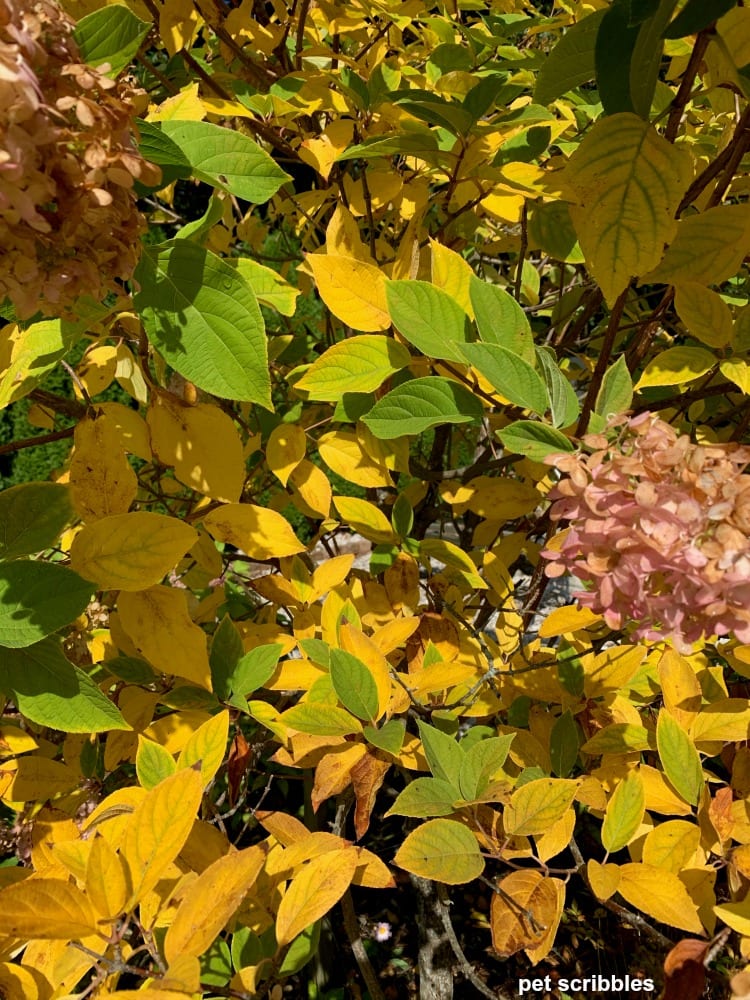The Basic Principles Of Hydrangea Leaves Turning Yellow
Wiki Article
Hydrangea Leaves Turning Yellow Things To Know Before You Buy
Table of ContentsHydrangea Leaves Turning Yellow Fundamentals ExplainedHydrangea Leaves Turning Yellow Can Be Fun For EveryoneHydrangea Leaves Turning Yellow Things To Know Before You Get ThisUnknown Facts About Hydrangea Leaves Turning Yellow
One possibility is that the plant is not getting sufficient sunlight. During the winter season, the days are much shorter, and the sunlight is not as extreme, so see to it to place your Hydrangea in an area where it will get at least six hours of sunshine every day. One more reason for Hydrangea yellow fallen leaves in wintertime can be way too much water.Ultimately, the fallen leaves may be transforming yellow due to temperature tension. Hydrangeas like cooler temperatures, so if the plant remains in a spot that obtains as well warm or as well cool, the fallen leaves will transform yellow. If you assume temperature stress could be the problem, try moving your Hydrangea to a different location or shielding it from the components with a cloth wrap
New development will certainly be observed in very early spring, when you'll discover green foliage sprouting from stems that could have appeared dead. Nevertheless, if your leaves are turning brown in springtime or summertime, there are likely other factors at play. The exact factors depend upon the variety and their expanding conditions, yet as a whole, brownish hydrangea fallen leaves are an indicator of dehydration and wilting in the warm.
In the spring when the mercury stays fairly low, they'll do great. When things warm up over the summer season nevertheless, time spent in the early afternoon rays can trigger unimaginable damage.: Grow your hydrangeas in an area where they'll obtain sunshine in the mornings or nights, but not throughout the peak hours.
Hydrangea Leaves Turning Yellow Fundamentals Explained
Wilting is triggered by lack of moisture, meaning there are a few great methods to make use of to avoid this from taking place. Provide your hydrangeas a healthy glug of water every few days when the temperatures are climbing up high, and treat the dirt to far better maintain wetness. Hydrangea Leaves Turning Yellow. After watering, a bit of compost around the base of each plant must help with this by keeping dampness in the dirtThis disrupts fungis spores from clearing up. "The Botrytis fungi thrives in great and wet conditions, so prevent bathing the entire plant when watering and simply water at the origins," shares Roy Nicol, a Master Gardener. If you have actually missed out on the chance for avoidance and are dealing with an infection you ought to eliminate all dead or severely contaminated leaves from the plant and ruin them to avoid further spread.
As a basic policy of thumb, we recommend removing fallen leaves when they are 50% brown or higher. While browning caused by any kind of reason can't be reversed, taking the corrective activity described above will urge the plant to grow brand-new fallen leaves so the damaged leaves either fall off naturally or can be removed by the gardener.
Hydrangeas must be sprinkled just when the top few inches of soil are dry, and must be offered a comprehensive soaking each time. Underwatered hydrangeas are likely to have yellow, wilting, and sagging leaves.
The Facts About Hydrangea Leaves Turning Yellow Uncovered
The article method you take care of hydrangea leaves transforming yellow depends on the crucial issue triggering the yellow fallen leaves. This can be difficult to figure out, once you do you will be able to adjust your plant care accordingly to take care of the issue. As pointed out in the past, an usual concern with hydrangeas is vitamins and mineral deficiencies.
You can buy and set up simple watering globes. Sprinkling globes hold water in them and slowly release this water into the dirt as the ground ends up being completely dry. Just fill the world with water, stick the spout into the soil within the origin zone near the base of the plant, and leave it in location until all the water is gone.

The 5-Second Trick For Hydrangea Leaves Turning Yellow
To avoid spreading fungal illness, be sure to thouroughly clean and sanitize any trimming tools prior to and after use (Hydrangea Leaves Turning Yellow). You can attempt have a peek at these guys to purge the roots with water to remove excess fertlizer.
Your hydrangea plant chooses well-drained, wet dirt. If the pot has bad drainage, or your soil is swamped, the fallen leaves will certainly begin to turn yellow.
If you don't water your hydrangea plant for even more than a week, the leaves will certainly begin transforming yellow. Fungal conditions that assault the plants often tend to reveal indications on the roots and the fallen leaves of the plant.
Root rot happens when microorganisms take up the root cells as hosts and stop the cell from working. Otherwise cared for, this illness can ultimately bring about the plant dying. Fallen leave spot is one more fungal condition that can target hydrangea. It causes the fallen leaves transforming yellow and the appearance of brownish and purple areas on the fallen leaves.
Report this wiki page